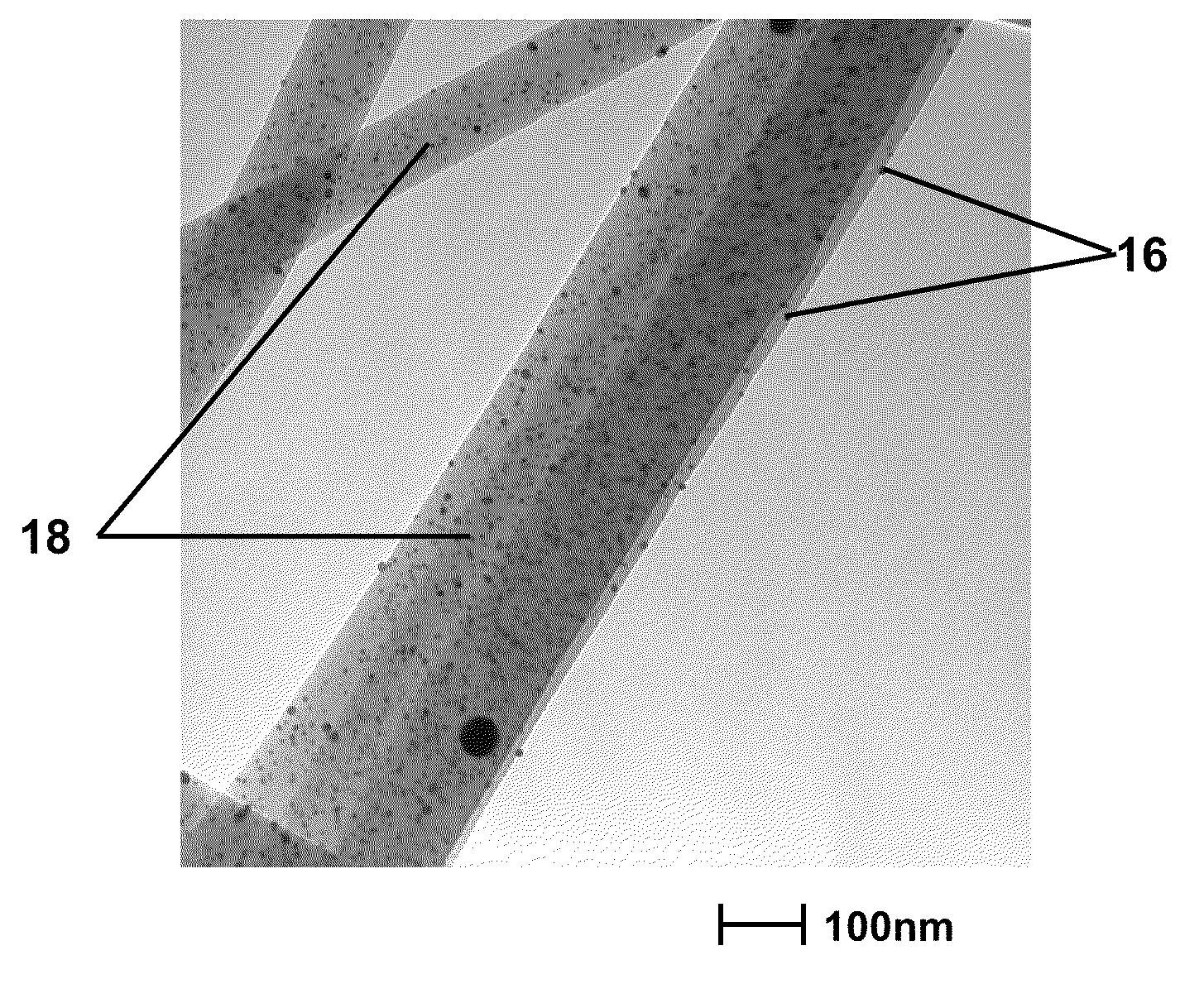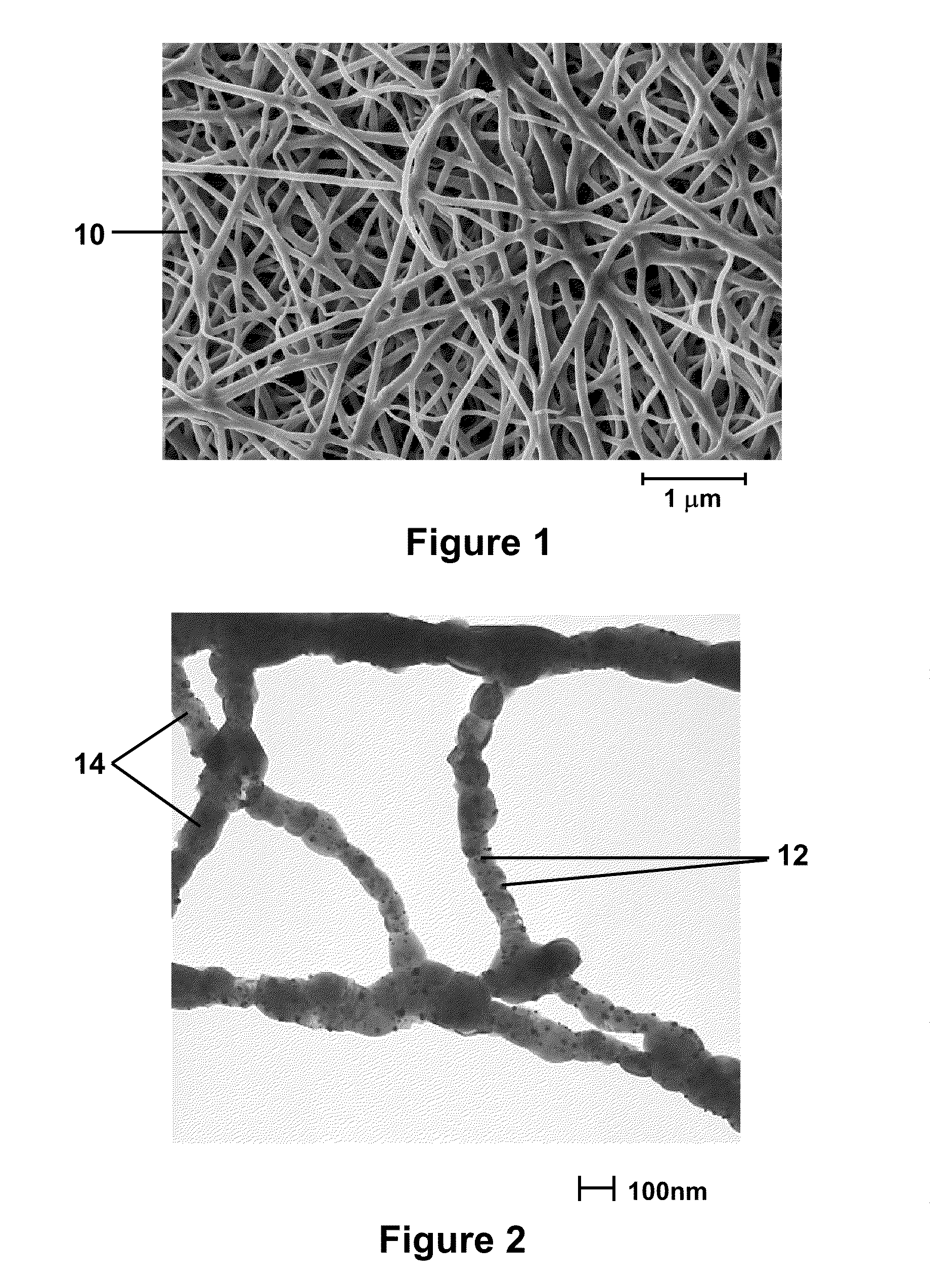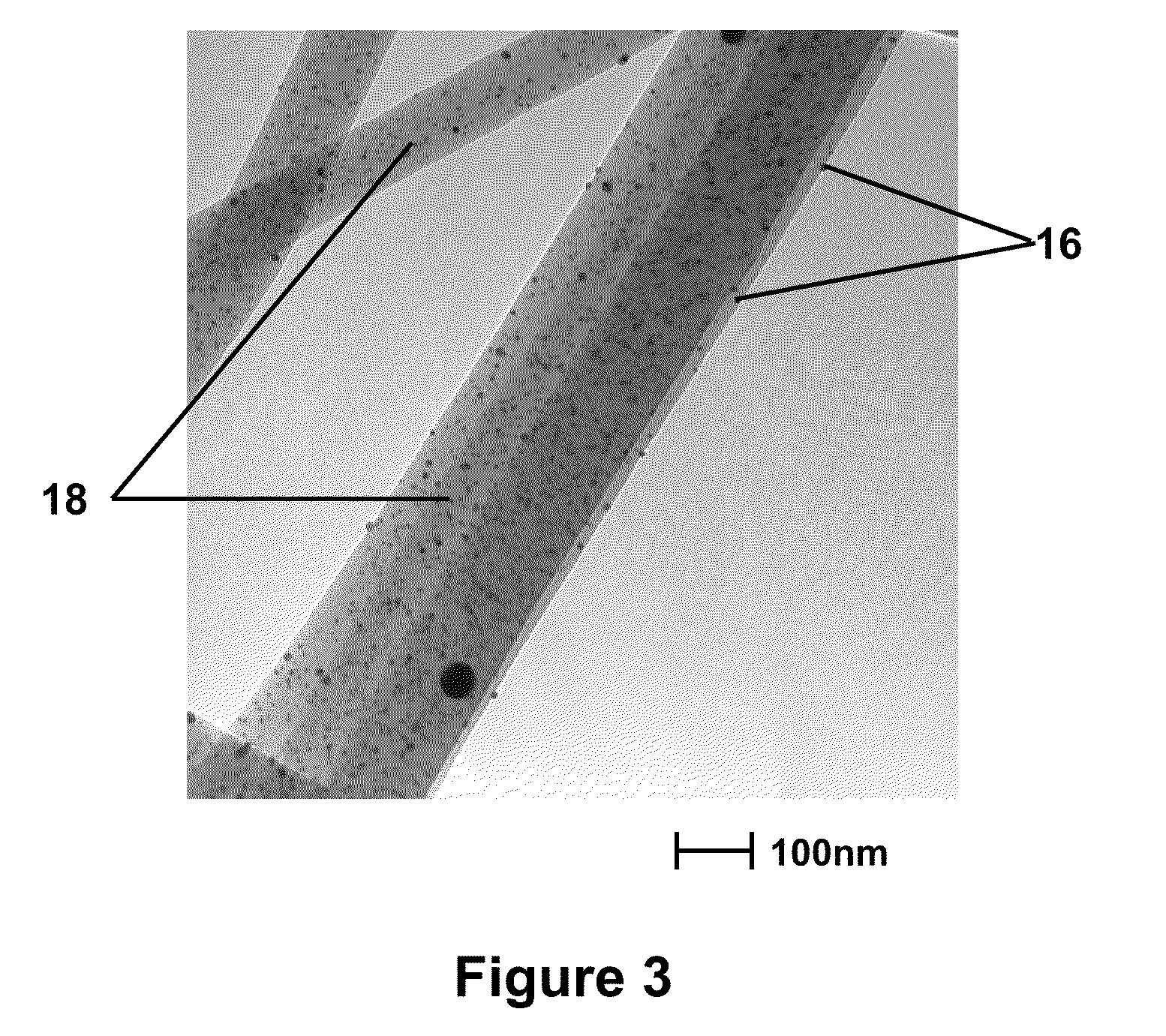Nanofibers And Methods For Making The Same
a technology of nanofibers and nanofibers, which is applied in the direction of metal/metal-oxide/metal-hydroxide catalysts, filament/thread forming, aluminium oxides/hydroxides, etc., can solve the problems of not fully exploring the use of gold nanoparticles in catalysis, and achieves reduced nanoparticle migration and agglomeration, and high surface area and aspect ratio
- Summary
- Abstract
- Description
- Claims
- Application Information
AI Technical Summary
Benefits of technology
Problems solved by technology
Method used
Image
Examples
example 1
[0048]400 mg of iron (III) acetyl acetone was weighed into a vial containing 6.5 mL of DMF. To this, 2 weight % zirconium (IV) propoxide (65 mg, based on weight of iron salt) was added followed by addition of 100 mg of Pluronic™ 123. Finally, 1200 mg of PVP was measured and added. The components were stirred until they were dissolved (about 2 hours of stirring). To this solution, 1.5 mL of THF, a co-solvent, was measured and added followed by stirring for another 1.0 hour to form a mixture. The mixture was placed into a freezer which was set at −15° C. for 12 hours to thermally induce phase separation, after which electrospinning was performed.
[0049]The electrospinning parameters were as follows: the distance from the nozzle to the collector was 15.0 cm; the applied voltage was 10.0 kV (positive) and 5.0 kV (negative) (the phase separated mixture was charged positively and the collector was at a negative voltage); the pump rate was 0.2 mL / hr; the humidity was 22%; the temperature wa...
example 2
[0052]400 mg of iron (III) acetyl acetone was weighed into a vial containing 6.5 mL of DMF. To this, 2 weight % zirconium (IV) propoxide (65 mg, based on weight of iron salt) was added followed by addition of 100 mg of Pluronic™ 123. Finally, 1200 mg of PVP was measured and added. The components were stirred until the components were dissolved (about 2 hours of stirring) forming a solution.
[0053]An emulsion comprising gold salt was prepared as follows: a microemulsion was made with H2O: Cyclohexane: AOT (Dioctyl sulfosuccinate, Sodium salt) in the ratio of 10:60:30 by weight, respectively and 20 mg HAuCl was added followed by stirring at 1150 rpm.
[0054]The resulting emulsion was mixed with the solution and further stirred to homogeneity. The gold ions in the emulsion were reduced by the addition of 0.1 mL of 0.1M sodium borohydride solution, a reducing agent. To this, 1.5 ml of THF, a co-solvent, was measured and added followed by stirring for another 1.0 hour to form a mixture. The...
example 3
[0057]500 mg of aluminum tri-sec-butoxide was weighed into a vial containing 6.5 mL of Formic acid. To this, 100 mg of Pluronic™ 123 was added. Finally, 1200 mg of PVP was measured and added. The components were stirred until the components were dissolved (about 2 hours stirring).
[0058]An emulsion comprising gold salt was prepared as follows: a microemulsion was made with H2O: Cyclohexane: AOT (Dioctyl sulfosuccinate, Sodium salt) in the ratio of 10:60:30 by weight, respectively and 20 mg HAuCl was added followed by stirring at 1150 rpm.
[0059]The resulting emulsion was mixed with the solution and further stirred to homogeneity. The gold ions in the emulsion were reduced by the addition of 0.1 mL of 0.1M sodium borohydride solution, a reducing agent. To this, 1.5 ml of THF was measured and added followed by stirring for another 1.0 hour to form a mixture. The mixture was placed into a freezer set at −15° C. for 12 hours after which electrospinning was performed.
[0060]The electrospinn...
PUM
| Property | Measurement | Unit |
|---|---|---|
| Diameter | aaaaa | aaaaa |
| Vapor pressure | aaaaa | aaaaa |
| Dielectric constant | aaaaa | aaaaa |
Abstract
Description
Claims
Application Information
 Login to View More
Login to View More - R&D
- Intellectual Property
- Life Sciences
- Materials
- Tech Scout
- Unparalleled Data Quality
- Higher Quality Content
- 60% Fewer Hallucinations
Browse by: Latest US Patents, China's latest patents, Technical Efficacy Thesaurus, Application Domain, Technology Topic, Popular Technical Reports.
© 2025 PatSnap. All rights reserved.Legal|Privacy policy|Modern Slavery Act Transparency Statement|Sitemap|About US| Contact US: help@patsnap.com



